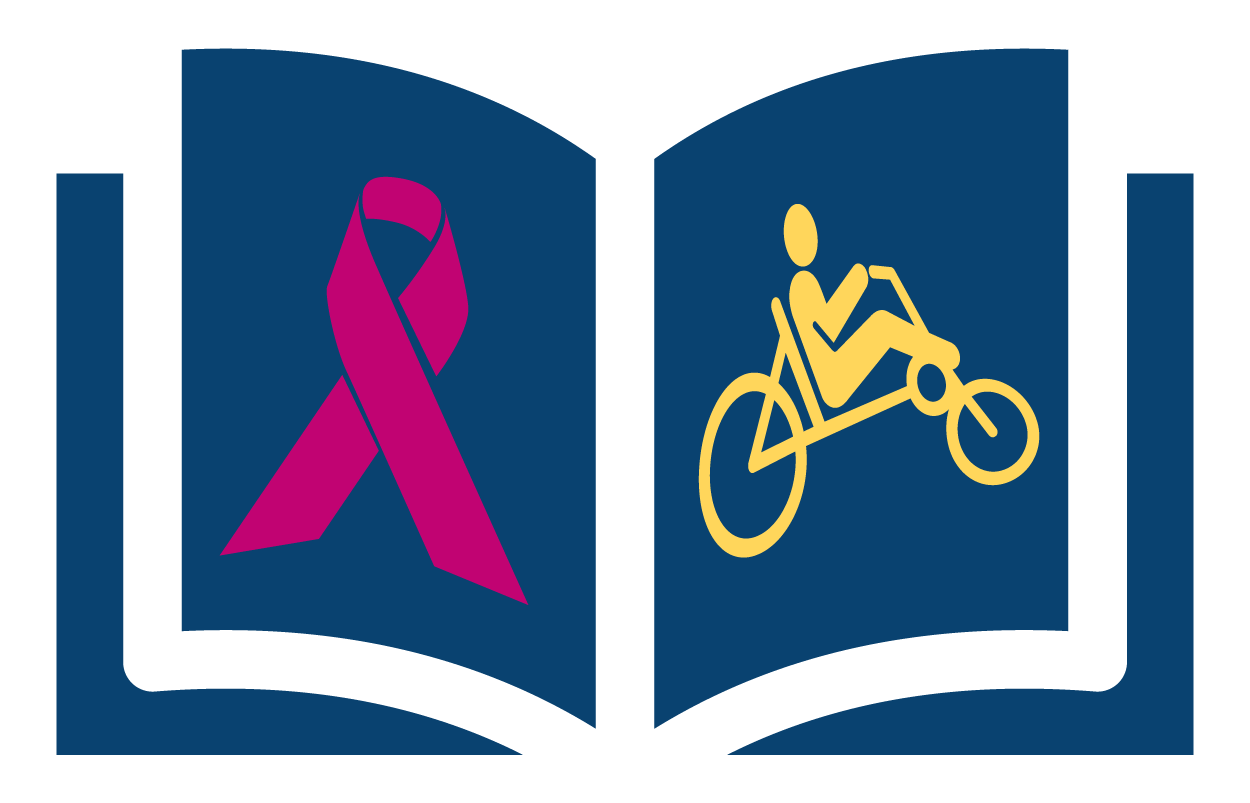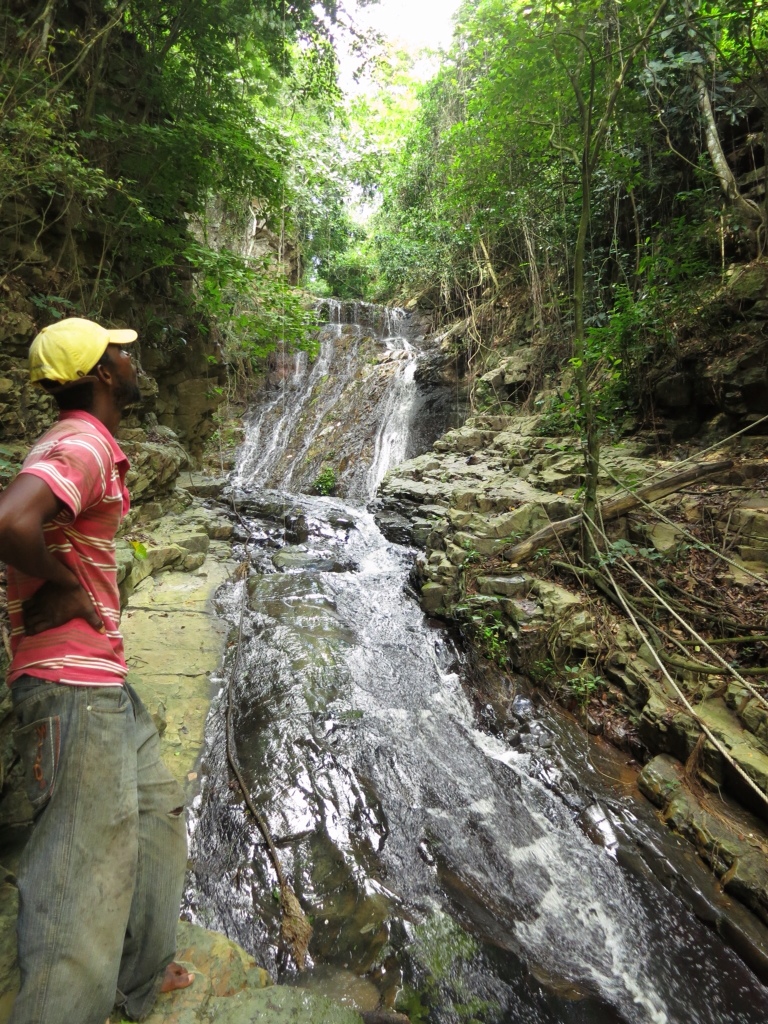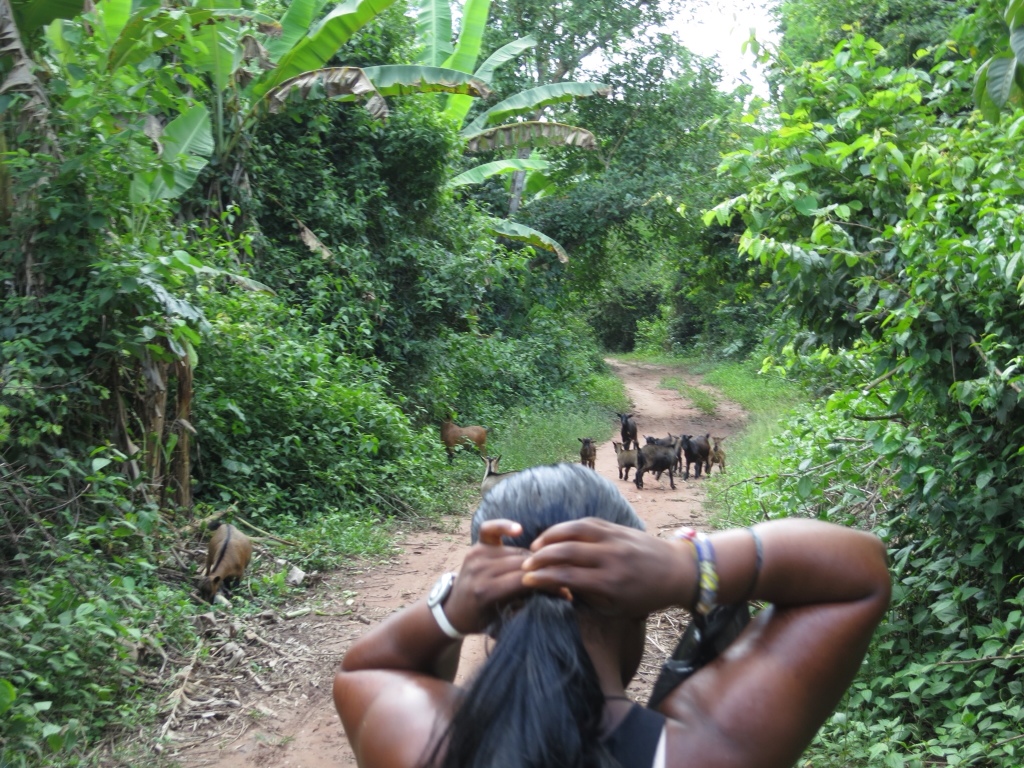Our day began with a hike through the tropical rain forest. The area was rather hilly, so the hike involved a lot of ups and downs.
On our hike we passed through areas were farmers had cleared to make fields. The most common crop in these fields is cassava, which is used to make fufu and banku. These are two starchy foods that are staples in the Ghanian diet.
Our guide used his machete to cut a path where plants had grown over the path. He also banged his machete against his walking stick on regular intervals. He said the metallic sound was to scare away snakes.
In case you ever wondered what a wild pineapple looks like. I don’t think I’d ever seen one before.
We passed through a cocoa farm, where the farmer was still sleeping on her bench. The “farm” consisted of about 10 or 12 trees in a small grove. When we initially walked through the farmer was sleeping, but on the way back she was awake and talking to someone on her cell phone! When the cocoa pods are ripe they turn yellow.
We had seen these huge snails in the market, but I couldn’t get a picture then. I wonder if they taste anything like the escargot we get in a can at home?
The hike involved a few too many hills for Becky’s knees, so she stopped for a rest and skipped the last 5-10 minutes, while Scott and our guide continued down the steep trail to the waterfall.
When we returned from our hike, we took advantage of our room at the lodge to take a shower and put on some clean clothes. We heard from our tour company that the air conditioned truck was still broken, and that Fofo would continue as our driver for another day. Our next night’s destination was Liate Wote, an eco village that is set up to allow tourists an opportunity to experience different aspects of Ghanian village life. The tour company owner said that we should be sure to sit on the patio at Stella’s Inn and enjoy the view of village life. This certainly put an image in Becky’s mind that didn’t align with the reality when we got there.
Before heading to Liate Wote, we stopped in at the Tafi Atome Monkey Sanctuary. Becky was really skeptical of this plan. She entered the village expecting it to be a bit of a tourist trap. It does feel a little like some of these “tourist” things are set up to separate foreigners from their money. This may be our jaded view though – none of the little tours were very expensive, and they do provide some hard currency in areas which otherwise focus on subsistence agriculture. In the case of Tafi Atome, tourist dollars have resulted in some significant improvements to the village. Also, there is so little tourist infrastructure in Ghana, it needs to start somewhere. These small tours are at least an attempt to create a tourist economy.
The monkey sactuary turned out to be a pleasant surprise. We began with a nice walk in the woods. Unlike this morning’s hike, the trails were all very flat, which made it quite relaxing. As we walked along the trails, another guide walked through another area of the forest, both guides making calls to the monkeys. The guides kept in contact with one another over cell phones as they tried to find the monkeys – it took about 30 minutes of walking before they found some monkeys for us to visit (and feed). Because we were there at noon, rather than early morning or late afternoon, the monkeys were far from the trails, and likely resting. Given the heat, they were smarter than we were!
Our guide demonstrated to us the correct way to feed the monkeys. The monkeys in this forest are protected. The locals belief they are some kind of spiritual beings, and as such have protected this area. There are no banana trees within the monkey sactuary, so the monkeys get a treat whenever tourists come to visit.
Unlike the monkeys at the Batu Caves in Malaysia, these monkeys are tame and not aggressive. They are happy to grab a banana out of your hand if you aren’t holding it tight enough. If you do hold it tight, they will peel the banana skin back and pull out the banana – all rather quickly. Their hands do not have claws and they never hissed at us or showed their teeth.
Overall, we really enjoyed the visit to the monkey sanctuary.
Along the way to Liate Wote, we passed by this very large baobob tree. Fofo said it was the largest one in Ghana. We jumped out of the truck to take a picture. While Fofo was taking a picture of us around the tree, a local man came and told him he couldn’t do this without permission. After some lengthy discussion, we ended up paying the local man a 2 Cedi “tourist tax” to be permitted to take pictures of ourselves around the tree.
As we approached Liate Wote, we could see that some thunder storms would soon hit. We pulled into town and ordered our supper. It was between 2-3 pm – but supper is usually ordered well in advance, so people can get ingredients if needed). They didn’t have a menu, and Becky’s stomach was a bit uncertain, so we ordered what we knew – groundnut soup with chicken. We headed to the visitor centre to see about a hike to the famous Tagbo waterfall. When we arrived, they said the storm was coming soon, and suggested that we check into the guest house, and if the storm doesn’t arrive, then we could hike. Otherwise, the hike would need to wait until the morning.
As soon as we got to the guest house the rains hit. It poured. We started to think about food and wondered how we would get our supper. Not soon after that thought occurred, a young boy of about 10 arrived with a basket containing our dinner, including cutlery, napkins, cups and everything else we needed. The groundnut soup was quite different from the previous version we tried, but still very good.
Our room was simple, but clean, and had a floor fan and regular electricity. We find that we prefer floor fans, because we can place them inside our bed net – creating a pleasant breeze through the night. The guesthouse did not have towels, so we were glad to be carrying a travel towel with us. The shared washrooms and showers were clean and we seemed to never run out of toilet paper. Overall, a great accommodation choice (at it only cost 15 cedi for the night).
Once the rain let up, we went on a tour of a mushroom farm. Apparently this was originally created as a women’s cooperative development project. This man was now trying to keep the farm alive in a much smaller form that it was when it was directly supported by development money. One issue is that that the mushrooms need sawdust to grow, but they didn’t have a road to the farm. This meant there was no way to deliver the large volumes of sawdust needed. They also needed to order the spores from overseas. In many ways, it seems like a poorly planned development project (of which there seem to be many in this part of Africa).
Before leaving the farmer (and making a donation to support the farm), we were asked to sign the tourist book. This is a common practice in Ghana, and we found ourselves signing these logs everywhere we went.
We had hoped to do a village tour before dark, but just as we finished the mushroom farm tour a group of students arrived on motorcycle taxis. Our guide needed to go find them a place to stay, as the guesthouse didn’t enough enough empty rooms for the new group. Overall, a nice day in Ghana – and we did several things that we otherwise would not have had we not had the truck and Fofo to take us there.




















Leave a Reply